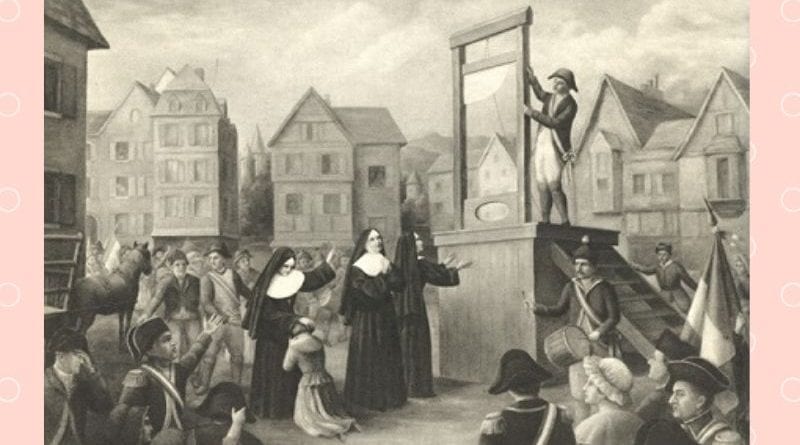

The Martyrs of Compiègne
- Medjugorje: Diego Manetti, renowned Mariologist and author of the book “Why the Madonna appears ” says: “We know 7 secrets concern terrible punishments…but punishment is not a product of God, but it is what man is producing himself.”
- BLOOD OF JESUS is the KEY TO HEAVEN – Fr. Mark Goring, CC
2 thoughts on “Christianity under attack in USA… THE SIXTEEN CARMELITE MARTYRS OF FRANCE -Remember it can happen here.”
Comments are closed.






Thank you for this chilling account of what happened to these true followers of Christ. It brings tears to my eyes as I imagine what they have endured and suffered for our divine redeemer. They were martyrs of the faith as so many known and unknown to this day where christianophobia is rampant throughout the Western world and particularly in France where yesterday the cathedral of Nantes saw its beautiful organ dating back to 1610 burned to ashes by some arsonist not yet found… will he ever be? and reminding us as well of Notre Dame fire…as a symbol of coming persecution for Christians.
This is reminiscent of what happened to 32 nuns from different contemplative orders in Orange in the South of France in the summer of 1794.To prepare for their great sacrifice these nuns prayed continually and in deep silence practicing all the religious virtues as related in the diary of a priest probably abbot Boussier. On their final day on this earth, the community gathered at 5 a.m. to pray for and hour. They recited the Divine Office and the Holy Mass.
At 8 o’clock the Litany of the Saints was recited as a preparation for their own death. Prayers for a general confession were made along with a spiritual communion as a viaticum and they prepared themselves to receive the Extreme Unction. They also renewed their religious vows of baptism; confirmation and holy religion.
At 9 o’clock they were called and left happily for the People’s Court where they would be sentenced to death.
What were the charges brought against them?
The public prosecutor found them all guilty of the same crime, being counter revolutionaries, enemies of liberty and equality and having attempted to overthrow the republic through their fanaticism and superstition, opposing the law, refusing to make the oath of allegiance to the republic, refusing to become citizens, having tried to foment civil war and having conspired against the republic”.
These nuns never complained or expressed any hatred towards their tormenters and accepted their fate.
Another interesting detail in this account is the fact that very often a priest who had refused to take the constitutional oath would be waiting in the wings somewhere in the crowd attending the guillotine ceremony to give his absolution to these poor souls.This secretly administered absolution occurred many times in Paris when the prisoners were taken from the Conciergerie close to Notre Dame to the Place de la révolution as it had been renamed (previously known as Place Louis XV and now Place de la Condorde). This is what happened in particular to a great saint although not yet on the altars Elisabeth the king’s sister who received absolution from a priest hidden on the first floor of a building who appeared at the window while the cart with all the prisoners passed by.
thank you for this important comment